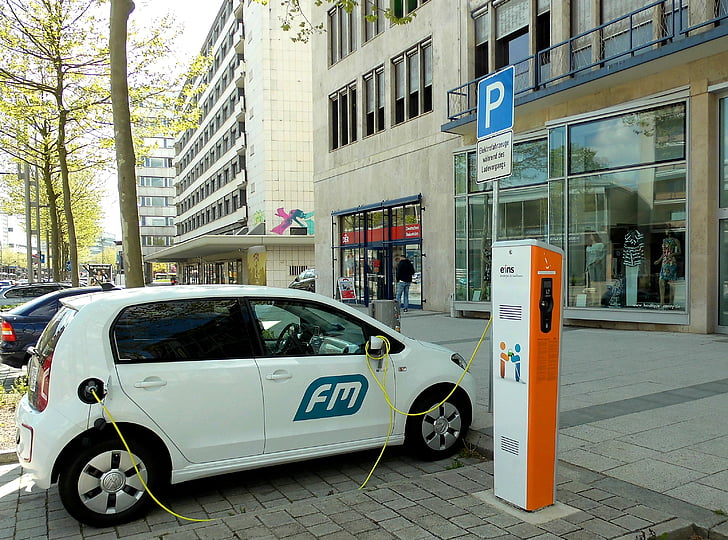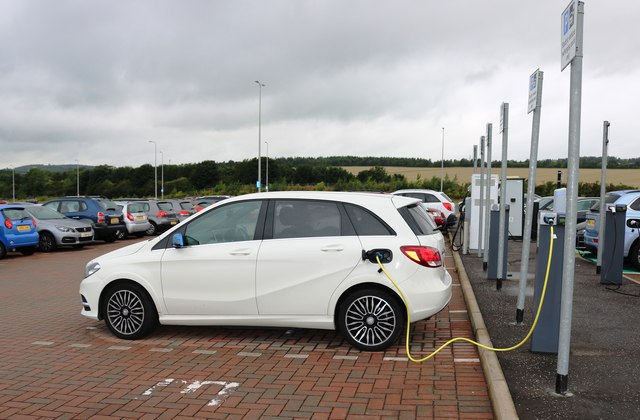The paradigm shift towards electric vehicles( EVs) has steered in a new period of mobility. EVs are vehicles that calculate on electricity rather than gasoline or diesel energy as their source of power. The advantages of EVs are manifold, gauging from enhanced air quality to dropped carbon emigrations and farther affordable energy costs. As a result of these advantages, the global demand for EVs is passing an unknown swell, herding automakers worldwide to make hefty investments in EV technology. The primary catalyst of the ascent of EVs is the mounting anxiety over climate change.
Transportation is a primary contributor to hothouse gas emigrations in multitudinous regions of the world. By rotating towards EVs, hothouse gas emigrations can be checked, and the rate of climate change can be braked. EVs also offer a range of profitable benefits besides their environmental advantages. also, EVs bear lower upkeep than conventional vehicles, which can translate into substantial cost savings over time. Automakers are aligning their sweats with the surging demand for EVs. Leading automakers encyclopedically, analogous as General Motors, Ford, and Toyota, are directing vast investments towards the development of EV technology.
These companies are working on creating new EV models that offer an extended range, shorter charging times, and more sophisticated features. Despite the burgeoning growth of the EV sedulity, it is not free of obstacles. One of the most significant impediments is the absence of charging structure for EVs. Although multitudinous megalopolises have posted public charging stations, there are still numerous regions worldwide where the EV charging structure is shy. This can produce a bottleneck for drivers who wish to travel long distances in their EVs. Another chain defying the EV sedulity is the advanced cost of EVs in comparison to conventional gasoline- powered vehicles.

- Although the cost of EVs is abating, they are still generally more precious than traditional vehicles, which can make it laborious for some consumers to explain copping an EV. Notwithstanding these challenges, the EV sedulity is on an upward line and is poised for continued growth. As governments encyclopedically persist in backing for cleaner, greener transportation options, the demand for EVs is anticipated to continue surging.
- With the password of major automakers and the blessing of consumers, it seems likely that EVs will come increasingly commonplace on our roads in the foreseeable future. The ongoing proliferation of electric vehicles( EVs) is causing a significant paradigm shift in the automotive sedulity, catalyzing a swell of invention and disturbance across the sector.
- The emergence of EVs as a cleaner, more sustainable volition to traditional gasoline- powered vehicles has been propelled by a growing concern about climate change, air pollution, and the limited force of reactionary powers. The purpose of this essay is to examine how the rise of EVs is reshaping the automotive sedulity and the global impact of this transformation.
- One of the most profound ways that EVs are pitching the automotive sedulity is by forcing automakers to review the fundamental principles of bus design and manufacturing. As EVs bear a completely different set of factors, analogous as electric motors, battery packs, and power electronics, the development of new engineering and manufacturing methodologies is a pressing priority for automakers.
Consequently, machine manufacturers are heavily investing in EV technology, with multitudinous of them setting ambitious targets for the chance of EVs in their lines over the coming decade. EVs are also changing the way we conceptualize transportation by furnishing a more sustainable and enjoyable driving experience than conventional motorcars. Their capability to operate still, fluently, and with minimal emigrations is converting the truly nature of mobility. also, EVs are unleashing new prospects for bus- sharing and lift- sharing services, which have the eventuality to palliate business and meliorate access to transportation in communal areas. The environmental impact of EVs can't be inflated. As EVs run on electricity, they induce zero emigrations at the tailpipe, making them significantly less dangerous to the air quality in comparison to gasoline- powered motorcars.

As renewable energy sources, like solar and wind power, come more considerably available, the benefits of EVs will only continue to magnify. ultimately, the wide handover of EVs is prodding invention across a range of combined fields, analogous as energy storage, renewable energy, and charging structure. As farther and farther EVs hit the roads, the demand for charging stations will launch, challenging investments in charging structure. This, in turn, will beget invention in battery technology and energy storage results, which will be essential for integrating large quantities of renewable energy into the power grid. The burgeoning electric vehicle( EV) request presents a paradoxical terrain, replete with both pledge and pitfall.
Despite the multitudinous touted benefits of EVs, a complex web of challenges continues to pose a redoubtable barricade to the wide handover of these vehicles. Among the most salient of these challenges is the issue of cost, which continues to bedevil consumers and investors likewise. The prohibitively precious price point of EVs can largely be attributed to the stunning cost of battery technology, which remains a contentious point of contention in the request. Another redoubtable handicap facing the EV request is the vexing specter of range anxiety. This phenomenon refers to the tendency of EVs to have a substantially shorter range than their gas- powered counterparts, which can beget alarm and hesitancy among would- be buyers.

Although advances in battery technology have kindly eased this issue, there remains a pressing need to increase consumer confidence in EVs and expand charging structure, particularly in remote or underserved areas. The challenge of charging structure looms large over the EV request, and it's clear that important remains to be done to fully address this complex issue. While considerable strides have been made in erecting out charging stations in communal areas, the lack of structure in pastoral and remote regions remains a major handicap to EV handover. The need for significant investment in charging structure from both the public and private sectors is consummate if EVs are to come a doable volition to traditional gas- powered motorcars.
Another issue facing the EV request is the thorny matter of battery recycling. The batteries used in EVs contain precious paraphernalia analogous as lithium and cobalt that can be reused, but recovering these batteries is a complex and precious shot, and there are presently only a sprinkle of installations suitable of doing so. ultimately, the issue of consumer education represents a critical challenge to the wide handover of EVs. Despite growing awareness and enthusiasm for these vehicles, multitudinous consumers remain strange with the nuances of EV operation and the benefits they offer. Education campaigns aimed at informing and empowering consumers to make informed opinions will be essential in addressing this issue and icing that the pledge of a cleanser and farther sustainable transportation system can be realized.












0 Comments
If you want an article about any technology topic or subject then let us know. We write content straight on the point without any unnecessary inclusion of information.
We will make sure that you will get good and perfect information from our side. also, have any doubt? let us know.
Thanks.